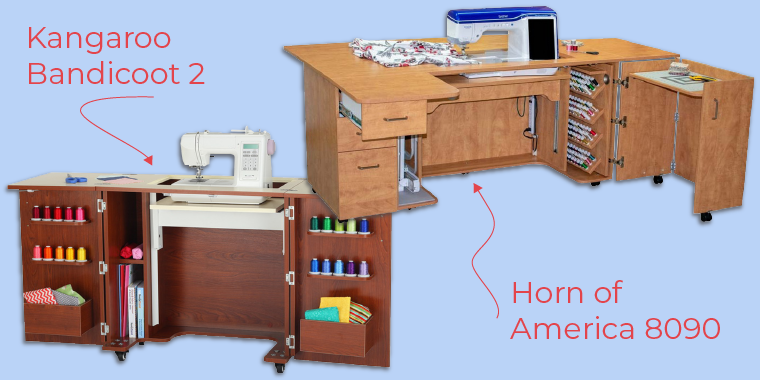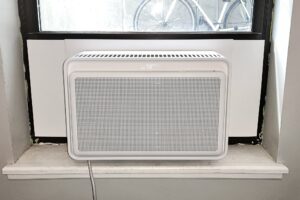How to Maximize Space with a Sewing Table: A Practical Guide

How to Maximize Space with a Sewing Table: A Practical Guide
Creating a dedicated space for sewing can turn a creative dream into a reality, but maximizing that space is key to ensuring it remains functional and enjoyable. Whether you have a small corner or an entire room, the way you organize your sewing table can make a huge difference. This guide will help you understand how to maximize space with a sewing table, turning any area into an efficient and pleasant workspace.
Choosing the Right Sewing Table
The first step in maximizing space is selecting the right sewing table. Not all tables are created equal, and choosing one that fits your needs and space can make a big difference. Look for tables that offer both storage and a sturdy work surface. A compact table with built-in shelves or drawers can help keep your sewing essentials organized and within easy reach. Additionally, consider tables with extendable or collapsible features if you have limited space.
Utilizing Vertical Space
One of the best ways to maximize space with a sewing table is by using vertical space. Wall-mounted shelves or cabinets can hold fabric, patterns, and tools, freeing up the table surface for actual sewing work. Install pegboards above your table to hang tools like scissors, threads, and rulers. This keeps everything visible and accessible, reducing clutter on your sewing table.
Incorporating Storage Solutions
Effective storage solutions are crucial for maintaining an organized sewing area. Use drawer organizers to keep small items like needles, pins, and buttons neatly arranged. Clear storage bins can help you quickly locate different types of fabric and supplies. Consider using a rolling cart or mobile unit that can be moved around as needed, offering additional storage without taking up permanent space.
Setting Up an Efficient Workflow
A well-planned workflow can make your sewing space more efficient. Arrange your sewing table so that frequently used tools and materials are within arm’s reach. Place your sewing machine in a spot where you can easily access power outlets and have a comfortable working height. Keep a small trash bin nearby for easy disposal of fabric scraps and thread clippings. Additionally, you can read more at: Eco Trends Media
Optimizing Table Space
To maximize space on your sewing table, use trays and organizers to keep your supplies in order. A sewing machine mat can protect your table and provide additional storage for small tools. Invest in a sewing table with an adjustable height to ensure you’re working at a comfortable level, which can also help with space management. Use fabric or tool caddies that can be easily moved and accessed without cluttering your workspace.
Incorporating Multi-Functional Furniture
Multi-functional furniture is a great way to maximize space in a small sewing area. Look for tables that double as storage units or include additional surfaces for cutting and pressing. An ironing board that folds away or attaches to the wall can save valuable floor space. A table with drop leaves or extension panels can be adjusted based on your sewing needs, providing extra work area when required.
Maintaining a Clutter-Free Environment
A clutter-free environment is essential for a productive sewing space. Regularly declutter your sewing table by organizing and storing items properly. Avoid letting unused materials pile up, and keep only the essentials within easy reach. Use fabric scraps creatively to minimize waste and prevent clutter from accumulating.
Creating a Comfortable Work Area
Comfort is key when spending long hours at your sewing table. Ensure that your chair is ergonomically designed and at the correct height for your table. Good lighting is essential; consider adding a task lamp or adjustable light to illuminate your work area. Keep your sewing table well-ventilated and at a comfortable temperature to maintain a pleasant working environment.
Implementing Smart Organization Techniques
Smart organization techniques can further enhance your sewing space. Label containers and drawers so you can easily find what you need without digging through piles. Use color-coded bins for different types of fabric or supplies, making it easy to locate specific items. Invest in a fabric organizer or a cutting mat with measurements to streamline your sewing process and keep everything in its place.
Planning for Future Needs
As your sewing projects and supplies grow, it’s important to plan for future needs. Design your sewing area with flexibility in mind, allowing for adjustments and expansions as necessary. Consider how you can adapt your space to accommodate new tools or materials, and regularly reassess your storage solutions to ensure they meet your evolving needs.
Conclusion
Maximizing space with a sewing table involves thoughtful planning and creative solutions. By choosing the right table, utilizing vertical space, incorporating effective storage solutions, and maintaining a clutter-free environment, you can create a sewing area that is both functional and enjoyable. With these tips, you’ll be able to transform any space into an organized, efficient workspace that enhances your sewing experience. Happy sewing!








